Throughout our entire lives, we have consumed tons of fruits on an occasional or daily basis. There’s no denying the fact that tastes and textures are some of the qualities we look for when choosing fruits.
However, have you noticed that some fruits are easier to consume because they don’t produce as many seeds?
In fact, some fruits produce only one seed throughout their life cycles. They are what we call drupes.
Drupes are fruits with a single ovary surrounded by juicy or dry flesh. They are also called simple fruits. Here are some examples of fruits with one seed:
Table of Contents
1. Avocado (Persea americana)

If you’re a fan of guacamole, then you definitely know how nutritious avocados are. These tropical fruits are native to Mexico. They are also called butter fruits and alligator pears.
You can easily recognize these fruits by their dark-green, leathery skin that covers their creamish or yellowish flesh and the large brown seed at the center.
Avocados are famous and widely preferred fruit due to their high-calorie content. These fruits offer monosaturated fats that are considered healthy and don’t increase your cholesterol level.
In addition, they are also rich in other nutrients such as vitamins A, B, E, and K, magnesium, potassium, sodium, and fiber.
Incorporating avocados into your diet can tremendously increase your health, especially for women. These fruits can help you to reduce weight, smooth your skin texture, and promote healthy fetal development for pregnant mothers.
2. Mango (Mangifera indica)

These bright-colored fruits are one of the most sought-after fruits that offer juicy and sweet flesh. Depending on their varieties, mangoes come in different colors such as yellow, orange, red, and green. They are tropical fruits that hail from India and Southeast Asia.
Mangoes have smooth skin with round or oval bodies. On average, they measure 2 to 6 inches long and spread 1.6 to 4 inches wide. They also weigh up to 2 pounds (0.9 kilograms). Under their skin and flesh, you can find a large, oval-shaped kernel that bears the seed.
One of the reasons why mangoes are considered superfoods is because they are rich in many nutrients such as vitamins A, C, E, K, and B6, potassium, magnesium, niacin, riboflavin, sugar, protein, carbohydrates, fiber, copper, and other minerals.
In fact, these fruits are low in calories. Hence, you won’t have to worry about your calorie level when consuming mangoes in large amounts.
3. Peach (Prunus persica)

Peaches are native to China. They possess juicy sweet yellow or white flesh with stone-like kernels in the center known as pits. These fruits come in two different categories, which are freestones and clingstones.
The flesh of freestone peaches doesn’t attach or stick to their pits. As for clingstone peaches, you will have to separate their fleshes from the pits.
There is also another variety of peaches known as nectarines. Oftentimes, some people tend to confuse these two cultivars.
However, the easiest way to separate peaches from nectarines is by looking at their skin texture. Most peaches have hairy or fuzzy skin, whereas nectarines have glossy and smooth skin.
Peaches are packed with a lot of nutrients. For instance, antioxidants found in their content can reduce free radicals and slow down the aging process.
Consuming peaches frequently also promotes better digestion, reduces the risk of cardiovascular diseases, and may hinder the growth of cancerous cells.
4. Lychee (Litchi chinensis)

Similar to peaches, these tropical fruits are native to China. They also grow in other countries such as Australia, Indonesia, Vietnam, and India. In the United States, they flourish in warm regions such as Florida and Hawaii. These fruits are also known as alligator strawberries.
Lychees possess coarse or bumpy red skin, white flesh, and a dark brown seed. You can eat their sweet flesh raw or use it to make juices, cocktails, desserts, and other delicacies. These fruits are also processed into dried and canned products.
However, the only downside when keeping lychees is that they can only last for a week in the fridge. Hence, it is best for you to eat them instantly while they’re still fresh.
Lychees are rich in many nutrients such as vitamin C, protein, carbohydrates, calories, sugar, and fiber.
However, the protein found in these fruits can cause allergies in a few unlucky people with symptoms such as swollen lips and tongue, breathing difficulty, and itchiness. But it rarely happens. So, you don’t have to worry about this issue when enjoying these sweet fruits.
5. Olive (Olea europaea)
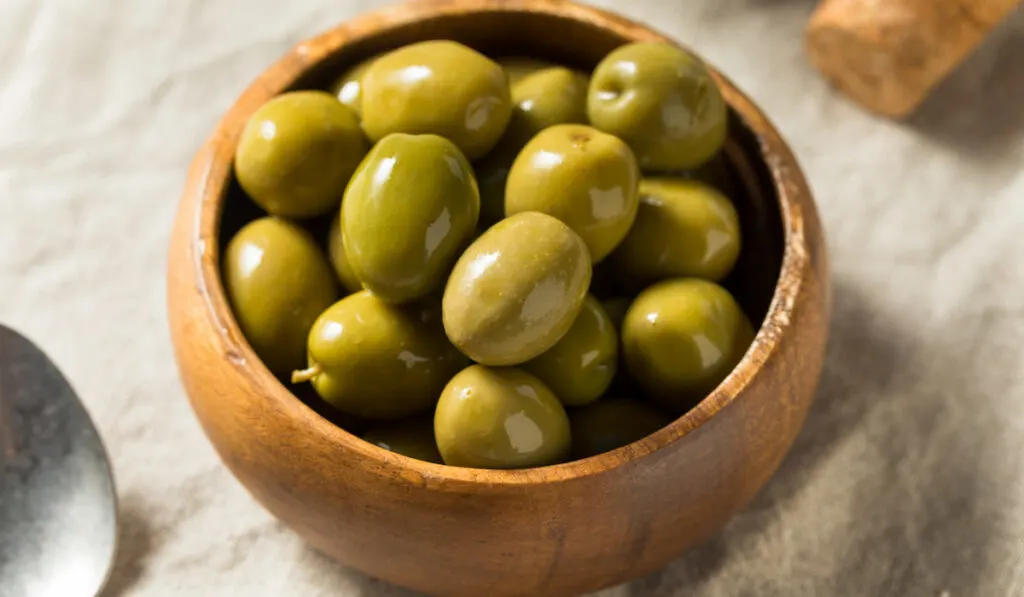
Olives are no strangers to people that use olive oil when cooking. In fact, extra virgin olive oil extracts are also sold in the market as raw products that offer numerous health benefits to consumers.
These fruits grow on medium-sized trees that measure 20 to 30 feet (6 to 9 meters) tall. You can spot olive trees by their coarse, dark brown bark and dark green, oval-shaped leaves.
The trees also produce clusters of scented white flowers. Unripe olives are green. As they mature, their skin will turn darker to purplish black.
Although most people prefer mature olives, it is the unripe ones that contain a higher composition of healthy compounds such as polyphenols.
Consuming unripe olives or their extracts can help in reducing inflammation, control your blood pressure level, and lower your risk of getting diabetes and cancer.
The only downside is that you will have to deal with their bitter taste.
6. Cherry (Prunus avium)
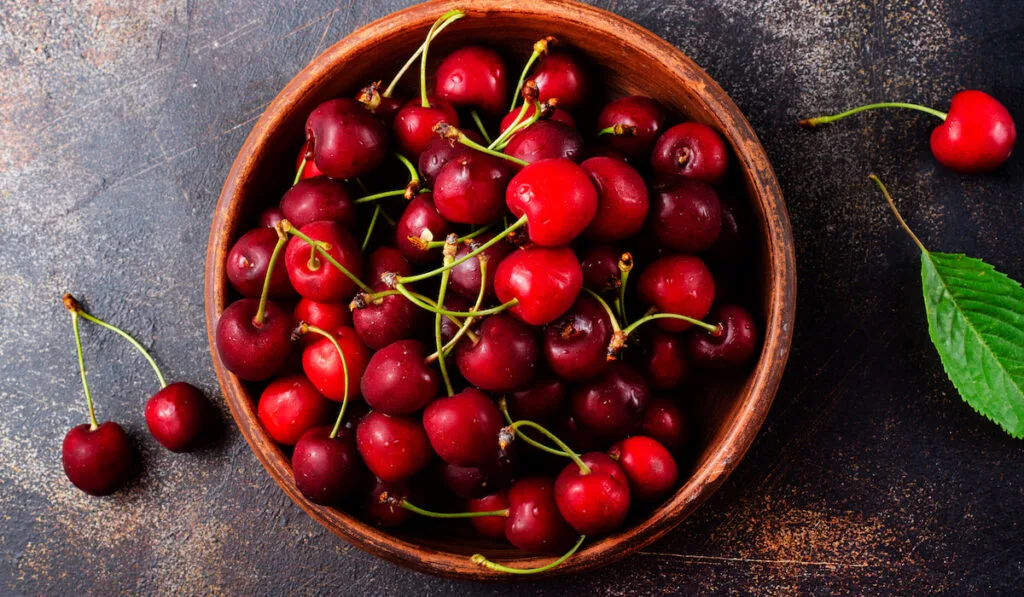
These small round fruits hail from the Caucasus Mountains and Asia Minor. Today, they are cultivated worldwide and used in different types of cooking and recipes. There are more than 150 cherry varieties. However, the two most prominent species are sweet and sour cherries.
Cherries grow on small to medium-sized trees that measure 13 to 33 feet (3.9 to 10 meters) tall. The trees also produce white or pink flowers.
Depending on their varieties, cherries may come in different colors such as red, dark red, reddish-orange, crimson, and black. Rest assured, their sweet and sour tastes are some of the biggest reasons why these fruits make the best ingredients for cooking, desserts, juices, and even canned products.
Cherries are packed with many nutrients such as vitamins A and C, antioxidants, and dietary fiber.
Incorporating these fruits into your daily diet can greatly reduce the risk of inflammation, improve organ function, and strengthen your immune system.
7. Apricot (Prunus armeniaca)
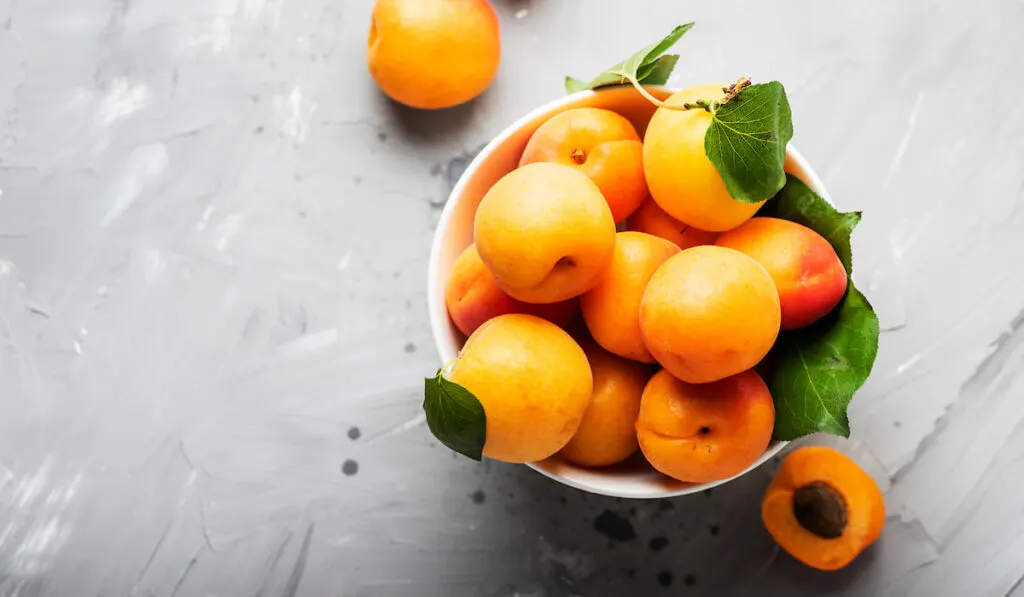
Apricots are native to Europe and China. They possess yellowish-orange skin and sweet, juicy flesh with hard central pits. These fruits grow on small trees that measure 26 to 39 feet (7.9 to 11.8 meters) tall.
You can recognize apricot trees by their bright green oval-shaped leaves and five-petaled white or pink flowers that bloom in the spring.
These fruits are highly nutritious and offer many health benefits. They contain vitamins A, B-6, C, E, and K, protein, carbohydrates, fat, potassium, magnesium, zinc, fiber, and other vital minerals.
Consuming apricots frequently can boost your immune system, improve your vision, and promote good bowel movement and digestion.
You can eat apricots raw or keep them in a freezer. Some people also choose to dry and preserve these fruits in cans.
8. Dates (Phoenix dactylifera)
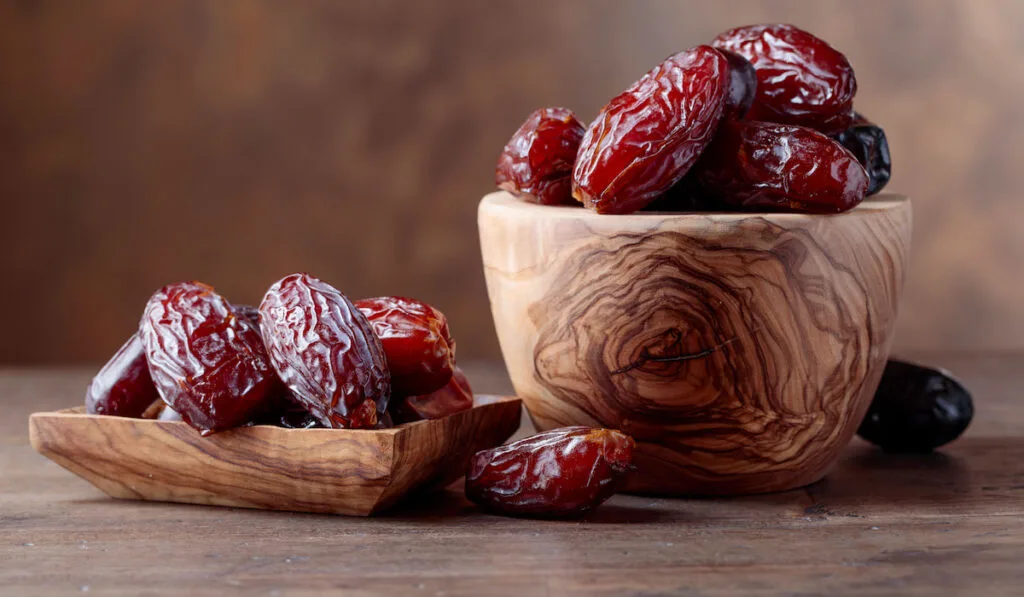
Dates or date palms are indigenous to the Middle East, particularly in Saudi Arabia, Iraq, and Iran. These prune-like fruits grow in clusters and come in different colors ranging from brown to yellowish-brown and reddish-brown.
Different varieties also offer different tastes such as nutty, sweet, buttery, caramel-like taste, and a combination of all these flavors.
In the United States, dates grow well in warm and tropical regions such as California, Arizona, Florida, and the Canary Islands. Dates are usually harvested when they are dried.
The only way to know whether these fruits are mature and dried is by looking at their skin texture. Dried dates appear wrinkly with darker skin.
There are numerous health benefits from consuming dates on a regular basis.
Dates can reduce free radicals that are responsible for inflammation, regulate your blood sugar level, and promote better bowel movement with the amount of fiber found in their content. Not to mention, they can also help pregnant women to have easier childbirth.
9. Jujube (Ziziphus jujube)

Jujube fruits are indigenous to Southern Asia. They are also known as Chinese dates, red dates, and Chinese jujubes. Depending on their species, these drupes may bear one or two seeds. Some cultivars are also considered seedless.
Jujubes have glossy, smooth skin, white or light green crunchy flesh, and light brown, inedible central pit. Unripe jujubes have green skin.
As they mature, the skin will turn brown or purplish black. Mature fruits will also have wrinkled skin that resembles dates.
The taste of Jujubes may vary depending on their species. Some cultivars produce sweet content while others have a slightly tangy to tart-like flavor.
There are many ways to consume and use jujubes. You can eat them raw as snacks, turn these fruits into nutritious juices, or keep them for pickling.
Oriental medicine practitioners also believe that jujubes can help in alleviating numerous health issues such as stress, inflammation, colds, influenza, and even facilitate wound healing.
10. Almond (Prunus dulcis)
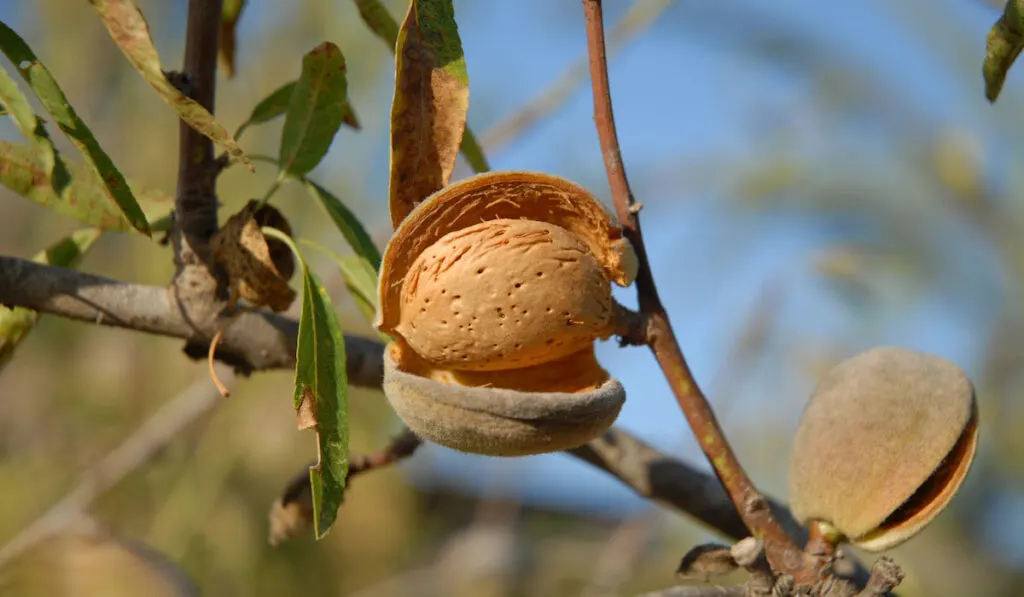
Contrary to popular belief, almonds aren’t actually true nuts. In fact, they are seeds derived from the kernel of almond fruits that belong to the rose family, similar to peaches, plums, and apricots.
These drupes are native to Iran. In the United States, they are widely cultivated in warm and tropical regions such as California.
You can spot almond fruits by their grayish-green thick shell and woody endocarp that protects their seed or nut. Mature fruits also have darker/brownish outer shells.
These fruits grow on medium-sized trees that stand 13 to 40 feet (3.9 to 12 meters). Almond trees produce light pink to white five-petaled flowers that bloom in the spring.
There are many ways to consume almonds. You can eat them raw, toasted, or use them as ingredients for dishes and desserts.
Almonds are packed with many nutrients such as protein, carbohydrates, dietary fiber, calories, and other vital minerals.
There’s no reason why you can’t include them in your daily meal.
11. Plum (Prunus spp.)
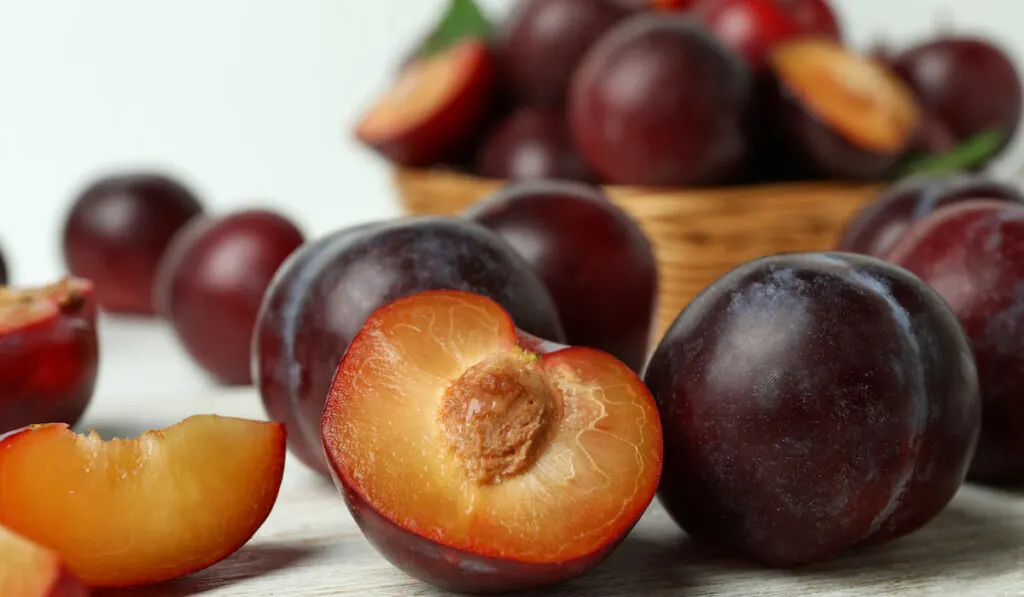
Plums are widely spread in many parts of the world, especially in Asia and Europe. These small to medium-sized round fruits come in different colors such as red, purplish-black, gold, and green.
Plums have smooth thin skin, stone-line kernel, and juicy content that yield different flavors ranging from sweet to sour and tart-like taste.
Different varieties may also produce different flesh colors. Some of the popular plum varieties that you can find out there are Mirabelle, Satsuma, Santa Rosa, Damson, Golden Drop, and Greengage plums.
You can eat plums raw or turn them into different kinds of products such as wines, jams, juices, smoothies, and dessert toppings. Prunes, which are dried and preserved plums, are also one of the well-known plum products available.
12. Longan (Dimocarpus longan)

Longans are native to China and India. They are also called the dragon’s eye fruits.
In the United States, longans are grown in warm areas such as Florida, California, and Hawaii. These tropical fruits possess brown or light thin skin with white flesh and hard, dark-colored pits.
Since they are related to lychees and rambutans, longans may have similar taste and flesh texture.
However, they are much smaller than those two fruits. Longans grow on large-sized trees that can stand up to 100 feet (30 meters) and spread 30 to 40 feet (9 to 12 meters) wide. The trees also have oblong, glossy dark green leaves and small yellowish-brown flowers.
Longans are best eaten raw. However, you must first remove their inedible skin and seed. Apart from treating these fruits as snacks, you can also preserve and turn longans into dried and canned fruits.
13. Rambutan (Nephelium lappaceum)
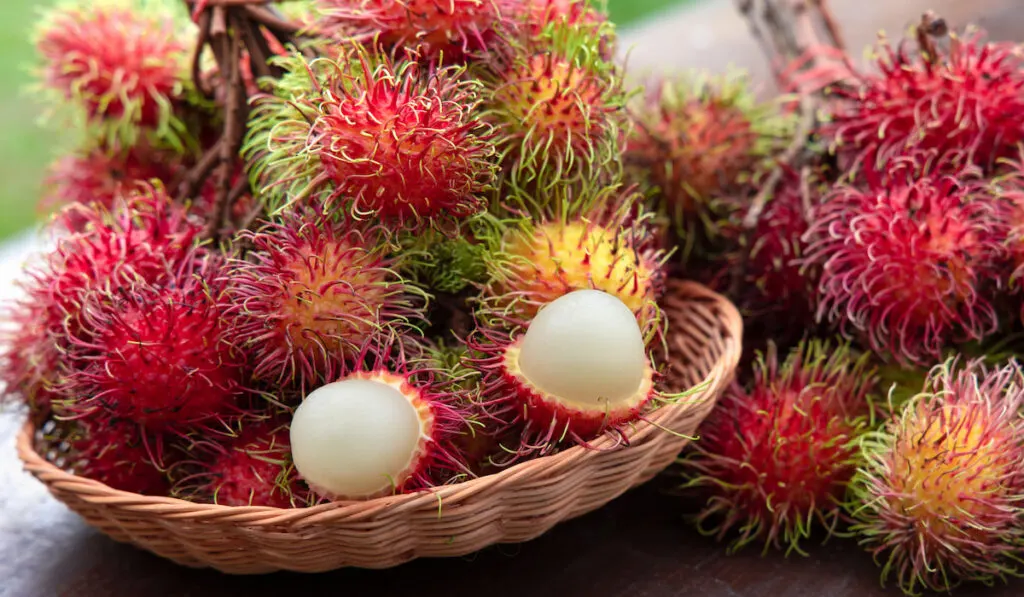
These weird looking but delicious fruits are native to Southeast Asia, specifically in the Malay Archipelago. You can recognize rambutans by their leathery skins covered with smooth, hair-like spines. Their name was also derived from the Malay word “rambut”, which translates to hair.
Rambutans come in different colors ranging from red to yellow and orange. They have sweet, milky white flesh and large, central hard pits.
These fruits grow in clusters on medium to large-sized evergreen trees that measure up to 98 feet tall. The trees also produce whitish-green, petal-free flowers that bloom twice per year.
These fruits are usually eaten raw. Their fleshes are usually sweet and juicy. You can also use rambutan as side dishes or mix them with drinks to make fruit cocktails.
Most importantly, these fruits are packed with nutrients such as vitamin C, antioxidants, dietary fibers, and other minerals.
Final Thoughts
Although fruits with one seed provide an easier way for people to consume fruits, you may encounter certain issues when trying to grow new plants from their seeds. There’s a chance that the seed you sow might not germinate. In order to prepare for the worst, you will have to prepare more than one seed from multiple fruits.
In contrast, fruits with many seeds can provide you with numerous seeds just from one single fruit.
Resources
- https://www.britannica.com/science/drupe
- https://guide2agriculture.com/one-seed-fruits/
- https://brainly.in/question/4777231
- https://www.healthifyme.com/blog/avocado-fruit-benefits-recipes/
- https://www.webmd.com/food-recipes/all-about-avocados
- https://www.nutrition-and-you.com/mango-fruit.html
- https://www.healthline.com/nutrition/mango
- https://en.wikipedia.org/wiki/Peach
- https://www.healthline.com/nutrition/peach-fruit-benefits
- https://www.webmd.com/diet/health-benefits-of-lychee-fruit
- https://www.thespruceeats.com/what-is-lychee-fruit-4772267
- https://sites.redlands.edu/trees/species-accounts/olive/
- https://www.oliveoil.com/are-olives-a-fruit/
- https://www.newworldencyclopedia.org/entry/Cherry
- https://specialtyproduce.com/produce/Cherries_295.php
- https://en.wikipedia.org/wiki/Apricot
- https://www.medicalnewstoday.com/articles/apricot-benefits
- https://www.masterclass.com/articles/how-to-grow-dates
- https://www.healthline.com/nutrition/benefits-of-dates
- https://en.wikipedia.org/wiki/Jujube
- https://specialtyproduce.com/produce/JuJube_2099.php
- https://en.wikipedia.org/wiki/Almond
- https://info.maisiejanes.com/almonds-are-fruit-should-you-eat-them/
- https://specialtyproduce.com/produce/Plums_4244.php
- https://www.newworldencyclopedia.org/entry/Plum
- https://en.wikipedia.org/wiki/Longan
- https://specialtyproduce.com/produce/Longan_674.php
- https://specialtyproduce.com/produce/Rambutan_6744.php
- https://eresources.nlb.gov.sg/infopedia/articles/SIP_208_2004-12-16.html
